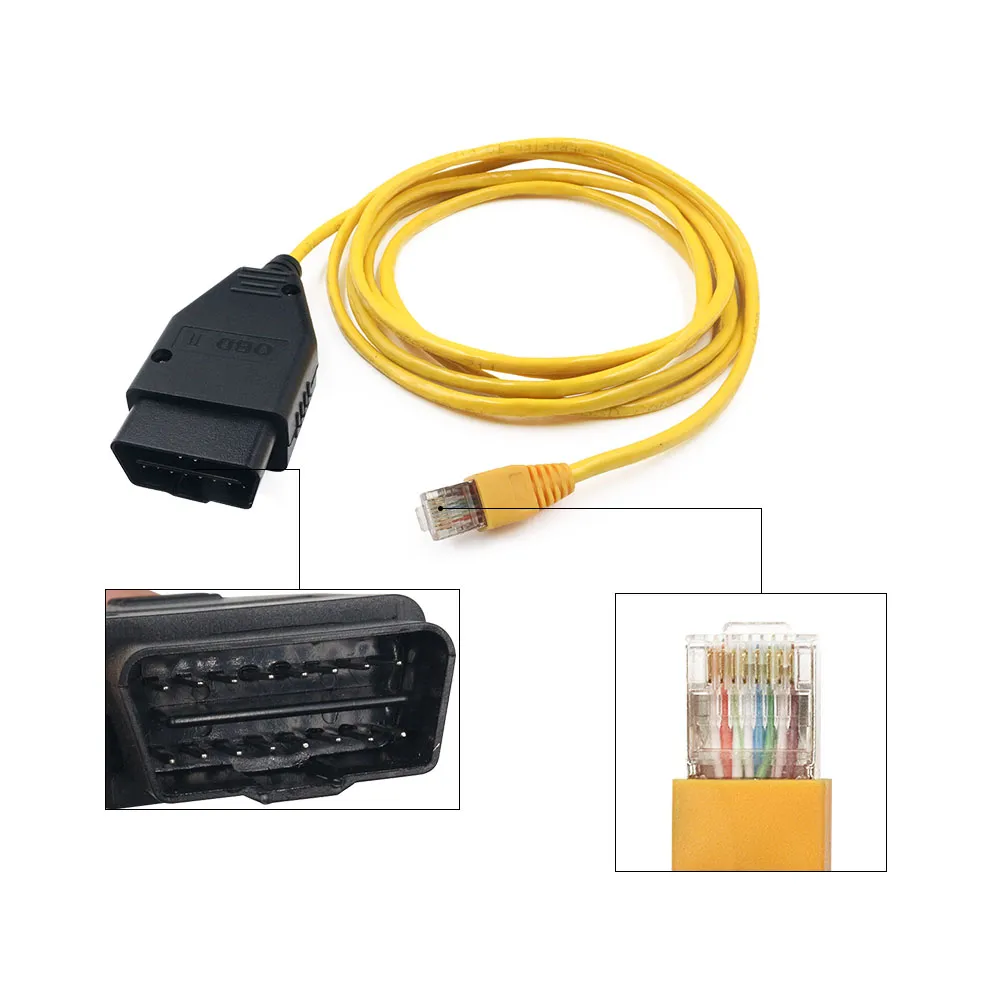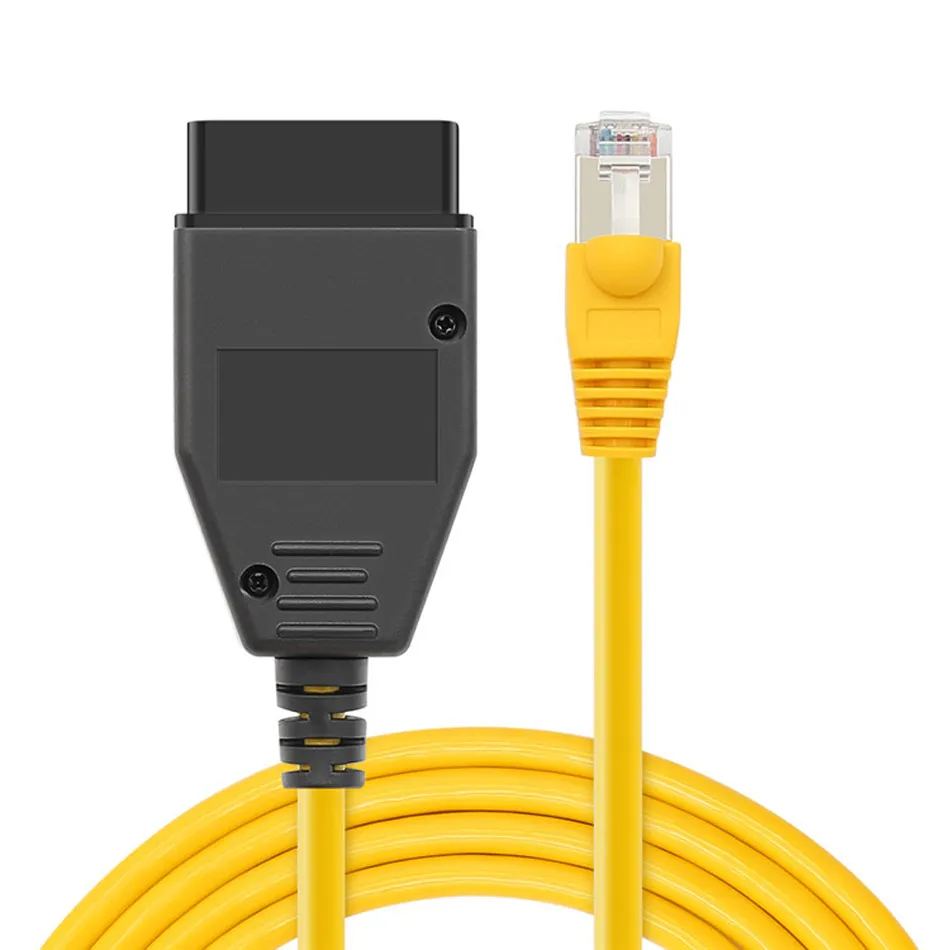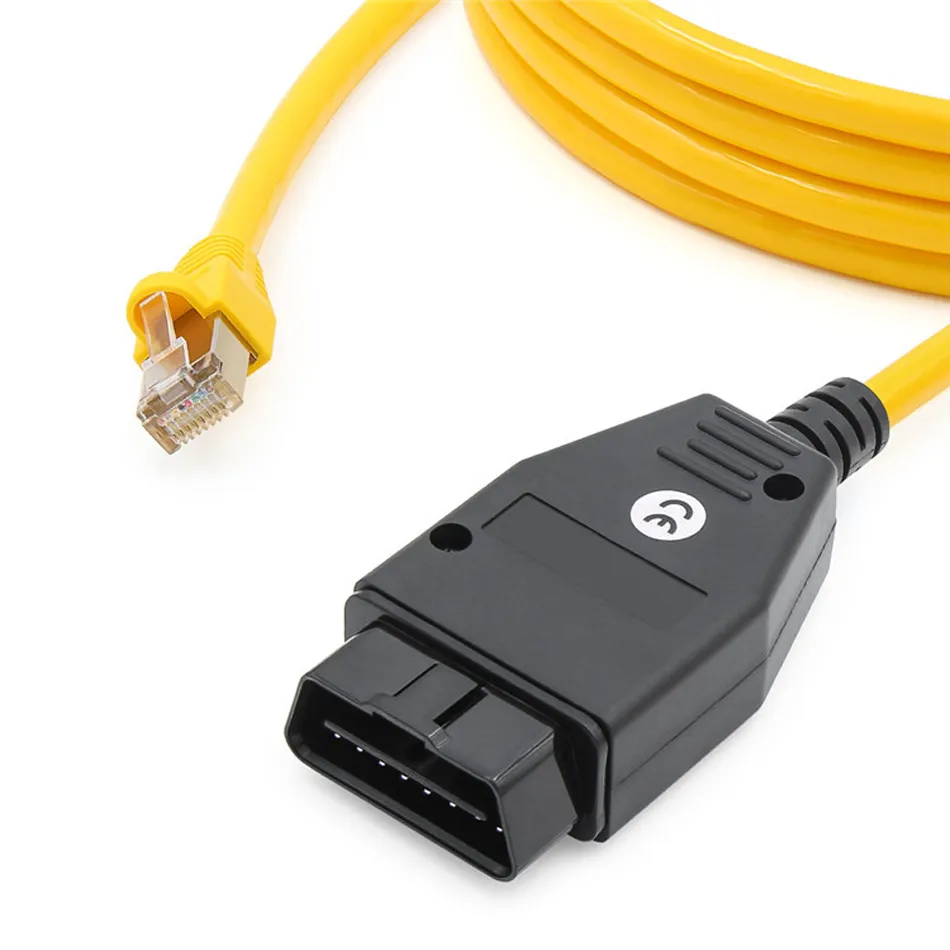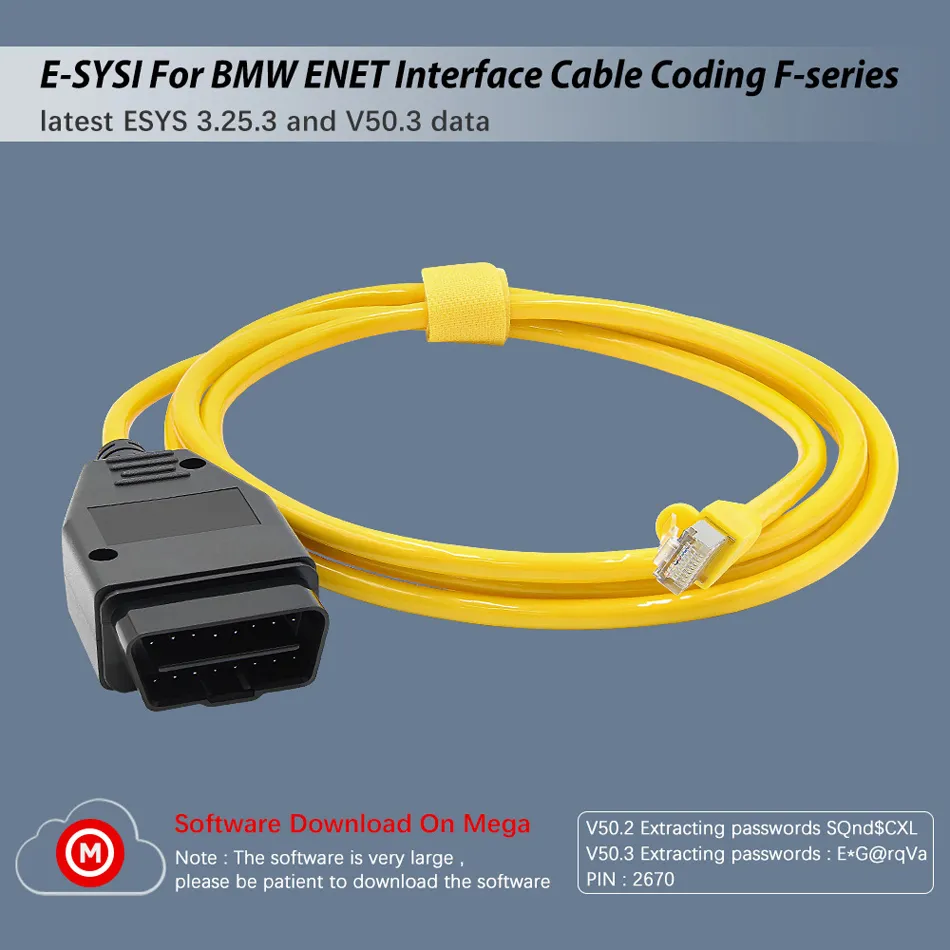The ENET cable is a must-have for BMW owners looking to diagnose issues with their vehicles. This diagnostic tool stands out from others in the market due to its ability to transfer precise data, wide compatibility across different BMW models, durability, and user-friendly design. By using the ENET cable, BMW owners can expect accurate diagnosis of issues, faster troubleshooting, cost-effective solutions compared to dealership diagnostics, and the ability to customize settings. To use the ENET cable, simply follow these step-by-step instructions: install software, pair the device, and access diagnostic codes. With the ENET cable, BMW owners can take control of their vehicle’s diagnostics and save time and money in the process.









ENET Cable
If you are a BMW enthusiast or a professional mechanic, then you know the importance of having a reliable and efficient diagnostic tool. The ENET cable is one such tool that has taken the BMW community by storm. It is a versatile, durable, and user-friendly cable that allows you to diagnose and code your BMW with ease. In this article, we will take a closer look at the features of the ENET cable that make it a must-have for all BMW enthusiasts.
Precise Data Transfer
One of the standout features of the ENET cable is its ability to transfer precise data from your BMW to your computer. This means that you can diagnose and fix any issues with your BMW quickly and accurately. The data transfer rate of the cable is exceptional, and you can expect to get comprehensive diagnostic reports within minutes. With the ENET cable, you no longer have to rely on guesswork or trial and error when diagnosing your BMW.
Wide Compatibility Across Different BMW Models
Another great feature of the ENET cable is its compatibility across different BMW models. Whether you own an older BMW or a newer model, the ENET cable will work seamlessly with your vehicle. This makes it an ideal tool for both DIY enthusiasts and professional mechanics who work with different BMW models regularly. The wide compatibility of the ENET cable is due to its ability to communicate with your BMW’s onboard diagnostic system (OBD).
Durability
The ENET cable is built to last. It is made of high-quality materials that can withstand wear and tear over time. The cable is also designed to be tangle-free and resistant to breakage. This means that you can use the ENET cable for years without worrying about replacing it. The durability of the cable is especially important for professional mechanics who use it regularly in their line of work.
User-Friendly Design
Finally, the ENET cable is designed to be user-friendly. It is easy to install and use, even for beginners. The cable comes with detailed instructions that guide you through the installation process, and once installed, you can use it with ease. The user-friendly design of the ENET cable is also evident in its compact size and flexible cord. You can easily carry it around with you and use it wherever you need it.
Benefits of using ENET Cable
When it comes to diagnosing the health of your BMW, there are many options available on the market. However, none come close to the benefits offered by using an ENET cable. In this article, we will highlight why ENET cables are the future of BMW diagnostics in terms of accuracy, speed, cost-effectiveness, and customization.
Accuracy
One of the most significant benefits of using an ENET cable for BMW diagnostics is the accuracy it provides. Unlike traditional diagnostic tools, an ENET cable communicates directly with the car’s ECM (Engine Control Module) and can access all modules within the car. This means that you get an accurate diagnosis of any issues, including those relating to engine management, transmission, ABS, airbag, and other control modules. With the ability to access the entire system, you’ll be able to pinpoint the exact problem instead of just guessing based on vague symptoms.
Speed
ENET cables are known for their fast troubleshooting abilities. When connected to your BMW, the cable provides real-time data, which speeds up the diagnosis process. This is especially helpful when dealing with intermittent faults that may be challenging to identify with traditional diagnostic tools. With an ENET cable, you can quickly scan for codes, read live data, and clear fault codes, saving you valuable time and money.
Cost-effectiveness
One of the most significant advantages of using an ENET cable for BMW diagnostics is the cost-effectiveness it offers. Instead of relying on expensive dealership diagnostics, you can now diagnose your BMW at a fraction of the cost. ENET cables are relatively inexpensive and can be used multiple times, making them a wise investment for any BMW owner. Furthermore, an ENET cable allows you to avoid costly repairs by catching minor issues early on, preventing more significant problems from developing.
Customization
With an ENET cable, you have complete control over your BMW’s settings. You can customize everything from the headlights and interior lighting to the suspension and steering. This feature is especially useful for those who want to fine-tune their BMW’s performance or make modifications to their vehicle. Whether you’re a seasoned mechanic or a DIY enthusiast, an ENET cable provides endless possibilities for customizing your BMW exactly how you want it.
How to use the ENET Cable
To use the ENET Cable, you will need to follow a few simple steps. First, you will need to download and install the appropriate software onto your computer. There are several options available, including BimmerCode, BimmerLink, and Carly, each with its own unique features and capabilities.
Once you have installed the software, you will need to connect the ENET Cable to your vehicle’s OBD-II port, located under the dashboard on the driver’s side of most vehicles. The cable should snap firmly into place, and you may need to adjust the angle of the connector to ensure a proper connection.
Next, open the software and select the appropriate make and model of your vehicle. You may be prompted to enter your VIN number or other identifying information, which will help the software identify your vehicle and provide accurate diagnostic information.
Once your device is paired and connected to the software, you should be able to access a range of diagnostic codes and information about your vehicle’s performance and health. This may include trouble codes related to engine performance, emissions, fuel economy, and more.
If you encounter any issues during the diagnostic process, there are many resources available online to help you troubleshoot and resolve these issues. Some software providers offer comprehensive user guides and tutorials, while others have active user forums where you can ask questions and get support from other ENET Cable users.
Ultimately, the key to using the ENET Cable effectively is to be patient, persistent, and willing to learn. While it may take some trial and error to get the hang of using the software and interpreting diagnostic codes, the benefits of having this powerful tool at your disposal are well worth the effort.
In conclusion, if you are an avid BMW enthusiast or mechanic looking to diagnose and troubleshoot issues with your vehicle, the ENET Cable is an essential tool that can help you save time and money. By following the step-by-step instructions provided in this article and taking advantage of the many resources available online, you can quickly and easily connect and use the ENET Cable for diagnostics.
FAQ
Q: What is an ENET cable, and how does it work with BMW diagnostics?
A: The ENET cable is a tool designed to connect your BMW vehicle’s diagnostic port to your computer or mobile device. It allows for precise data transfer between the car’s onboard computer system and your diagnostic software, giving you access to a wide range of diagnostic information and troubleshooting tools.
Q: What sets the ENET cable apart from other BMW diagnostic tools on the market?
A: One of the key advantages of the ENET cable is its compatibility – it works with a wide range of BMW models, from newer vehicles with enhanced diagnostic capabilities to older cars with more limited systems. Additionally, the ENET cable is built to last, with a durable design that can withstand heavy use in professional auto repair settings. Finally, the user-friendly interface makes it easy to get started with diagnostics, even if you’re not an experienced mechanic.
Q: How can I use the ENET cable to diagnose issues with my BMW?
A: Once you’ve connected your ENET cable to your BMW and your diagnostic software of choice (such as INPA or ISTA), you can run a range of tests to identify any issues with your car’s systems. This might include checking for error codes, testing sensors and actuators, or monitoring performance data in real time. From there, you can use the diagnostic information to troubleshoot the problem and make any necessary repairs or adjustments.
Q: Do I need any special knowledge or experience to use the ENET cable?
A: While some basic automotive knowledge can be helpful when using the ENET cable for BMW diagnostics, you don’t necessarily need to be a professional mechanic to use this tool effectively. With a bit of research and practice, anyone should be able to learn how to use the ENET cable to diagnose and troubleshoot issues with their BMW. Additionally, many diagnostic software programs come with user manuals or online tutorials that can help guide you through the process.